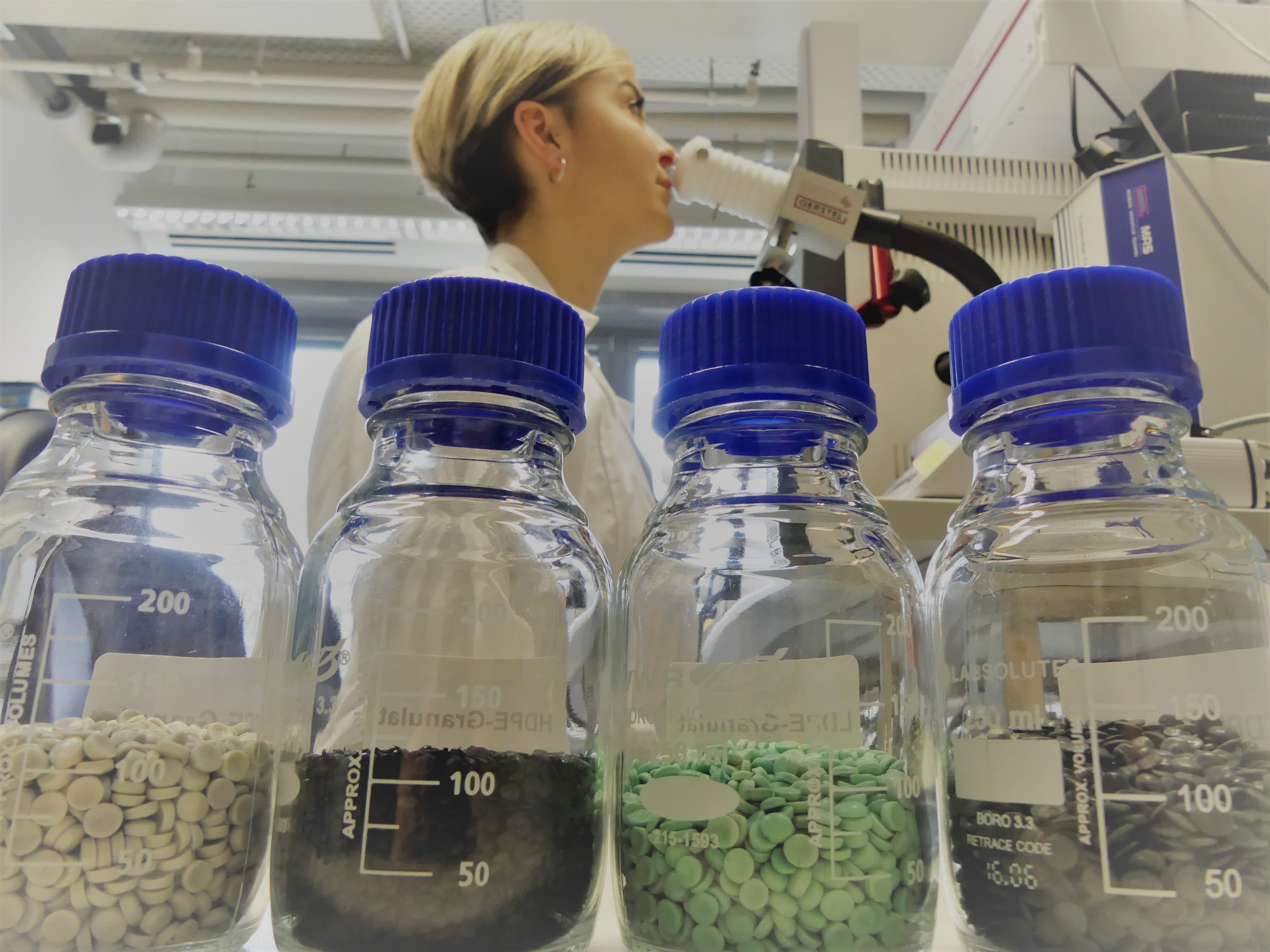In order to achieve the goal of climate neutrality in Europe by 2050, as formulated in the Green Deal, the European Union has specified concrete measures to reduce emissions in the coming years. One goal is to transform linear value chains for plastics into a circular economy. The packaging market in particular, which accounts for 40% of the primary plastics consumed, offers great potential for saving resources. By recycling post-consumer packaging waste into high-quality recyclates, primary raw materials are to be replaced, thus creating closed material cycles.
In order to be able to achieve the target shares of recyclate use issued by the European Union, even for sensitive application fields such as food packaging, plastic recyclates must meet high-quality requirements in terms of material purity, mechanical properties and product safety. Accordingly, there is a high demand for advanced recycling processes that enable recovery of high-quality recyclates from post-consumer packaging waste. At the same time, high product quality must be monitored and guaranteed by reliable quality assurance systems.
To meet the high quality requirements for recyclates, contamination with or migration and release of odorous substances and other volatile organic compounds originating from the product must be minimized as far as possible. The presence of these substances can sometimes be directly traced back to the initial use of the plastics (e.g. detergent packaging) or to the activity of microorganisms (e.g. in food packaging). Odorous substances can be emitted from the recycled product and thus influence the sensory product properties perceived by consumers. In addition to directly perceptible odor characteristics, the compounds can also migrate from the recycled packaging into the filling material.
The Fraunhofer IVV is therefore working on processes to effectively remove these odor-active contaminants during recycling. The department of Process Development for Polymer Recycling is therefore working together with the department of Sensory Analytics & Technologies on strategies and concepts for efficient detection of these substances with suitable measuring technology and for analytical evaluation of odor reduction processes. Accordingly, the first step is to establish suitable analytical methods in order to efficiently and targetedly evaluate odor reduction processes and compare them on a long-term basis. With support of already established methods in the field of odor analysis, including gas chromatography-mass spectrometry/olfactometry (GC-MS/O) and two-dimensional GC-MS/O methods, selected recyclates will be investigated by means of comprehensive tests in order to identify potent odorants. From these, representative marker substances will be selected by comparison with literature data and in-house databases. Based on this, efficient analytical methods will be established to enable a continuous evaluation of recyclates focusing on relevant odor markers, as well as their comparison. The developed methods should allow the semi-quantitative detection of these marker substances as odor indicators in a time saving and high throughput process and thus allow the comparison of a large number of samples. The chemical-analytical investigations will be accompanied and supported by human-sensory tests. Supported by this, various processes can be investigated in the next step with regard to their potential for minimizing off-odors in recycled materials. The focus will be on physical recycling processes such as vacuum extrusion, extractive extrusion or solvent-based recycling. However, upstream or downstream purification steps, such as washing, deinking or deodorization processes, can also be evaluated with regard to their effectiveness in reducing odorous substances.
https://www.ivv.fraunhofer.de/en/product-performance/odor-optimization/plastics.html
